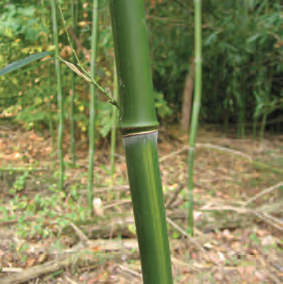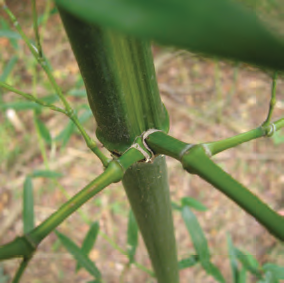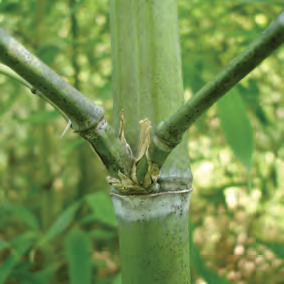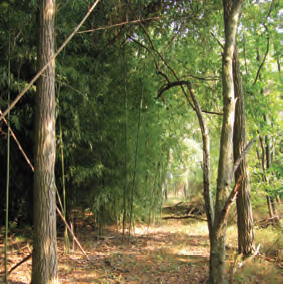Golden Bamboo
Phyllostachys aurea
Grass Family (Poaceae)
Perennial Grass
Flowers: flowers irregularly, rarely in North America
Native Range: Asia
Introduction: as an ornamental in the late 1800s
Mid-Atlantic Range & Habitats: Open woods, roadsides, and yards, in the southern part of the region.


This massive, woody grass has been widely planted throughout the region, often as a living fence. It reaches 10 m or more in height and up to 15 cm in stem diameter. Bamboo spreads by a dense system of rhizomes that may be as long as the stem height. Reproduction by flowering is unusual in our populations. The dense shade and thick leaf litter in the interior of a stand prohibits the growth of other plant species. Other species of Phyllostachys bamboo may be found in our region, but are not as invasive as Golden Bamboo.

Quick ID
- Stem Leaf Sheaths: Stem leaf sheaths deciduous, not remaining attached to stem
- Mid-stem Primary Branches: Mid-stembranches consistently 2 per node, sometimes with a third, much smaller branch between the two larger ones
- Primary Branch Bases: Usually no compressed basal internodes at the base of primary branches
- Height: To 10 m or more

More ID Tips
Golden Bamboo, like others in the genus Phyllostachys, has a recessed groove (sulcus) on each stem internode. The sulcus is often a differnet color than the rest of the internode, and may be less prominent on lower stem internodes.

